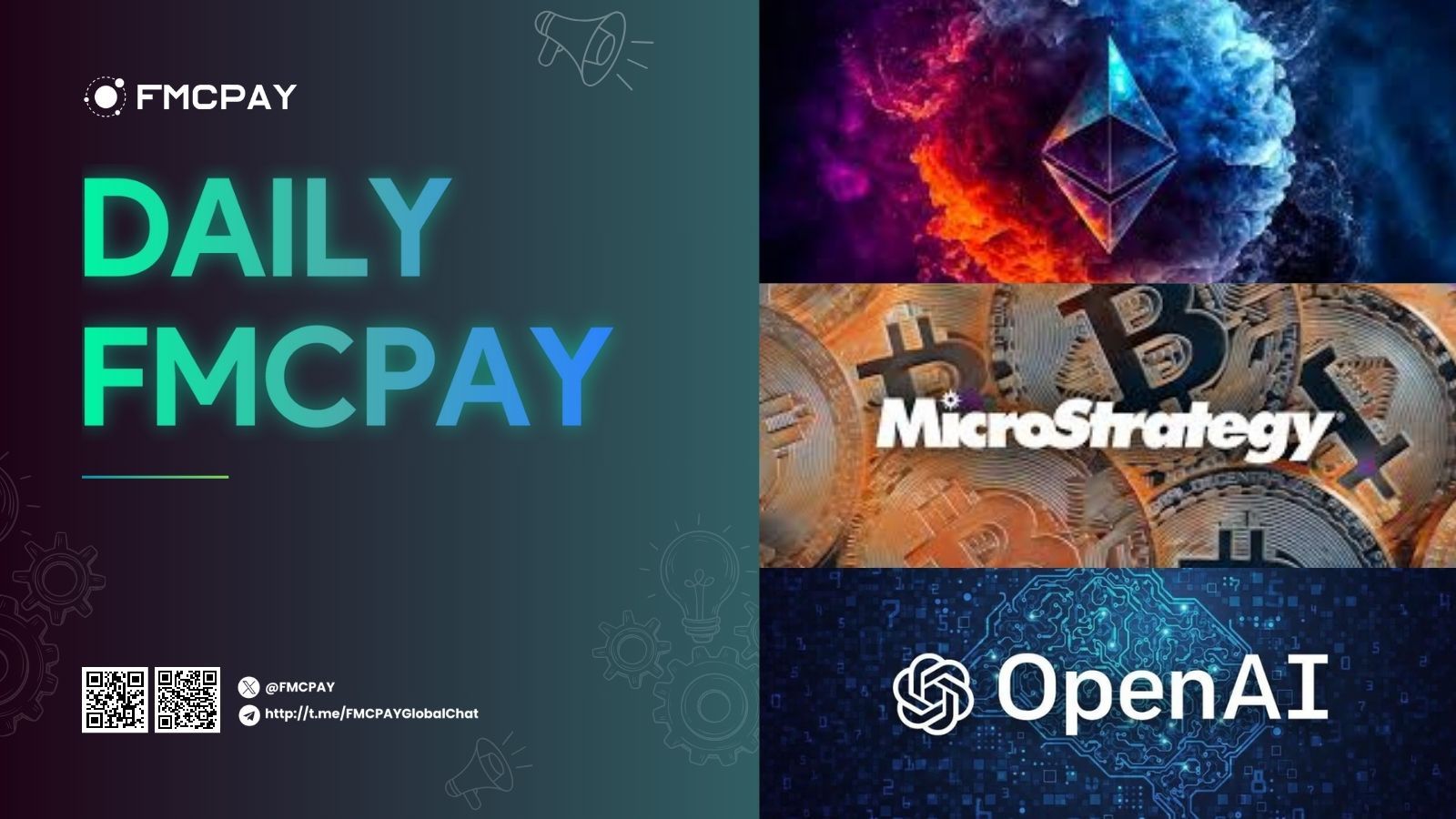A cryptocurrency analyst believes that BlackRock’s participation into the ETH market will cause the price of Ethereum to reach $29,000. Learn how that might occur.
The price of Ethereum (ETH) increased Tuesday, rising to a 24-hour high of $2,687 against the backdrop of a broader market consolidation. Investor interest was sparked by the price increase, as seen by increased open exchange interest. Nonetheless, the fact that BlackRock CEO Larry Fink has changed his mind on Ethereum may possibly be the reason why investors are swarming to the platform. With $9 trillion AuM, BlackRock is the largest asset manager in the world. By tokenizing $10 trillion worth of assets on the Ethereum blockchain, the organization hopes to take the lead in the real-world asset tokenization market.
Analyst anticipates Ethereum price to hit $29,000 as BlackRock CEO changes his stance
In response to Fink’s reversal of course about cryptocurrencies, a cryptocurrency expert has demanded that Ethereum reach a $29,000 price point by April 2025.
I really don’t care if all of CT thinks Ethereum is “totally lame and uncool”
The world’s largest asset manager completely disagrees with that stance
Larry Fink and I both understand the entire world will settle on Ethereum $ETH
$29,000 $ETH 🤝 April 2025
This is OBVIOUS pic.twitter.com/vuon7XF9LX
— EthereanVibin | 0xVibin.eth 🦇🔊 (@EthereanVibin) September 17, 2024
In a July CNBC interview with Jim Crammer, Larry Fink acknowledged that he used to be skeptical of cryptocurrencies. Fink remarked of ETH, “I was a proud skeptic.” And after learning more about it and studying it, I concluded that my assessment from five years ago was incorrect.
The audacious prognosis made by EthereanVibin makes sense given Blackrock’s substantial financial resources. Fink’s “endorsement” of Ethereum is in line with the views of numerous other financial institutions who hold BlackRock in high regard.
Furthermore, Fink believes that Ethereum’s asset tokenization will be valuable and that this would drive up ETH’s price to $29,000 by increasing demand and usage. In order to achieve this, BlackRock introduced the USD Institutional Digital Liquidity Fund, also known as BUIDL, a tokenized asset fund on the Ethereum network that gained over 30% of the $1.3 billion tokenized Treasury market.
Based to Coinbase research, the RWA market rose by 41% in Q1 2024, hitting $3 billion. Furthermore, by 2030, the Boston Consulting Group (BCG) projects a startling $16 trillion market.
Ethereum price forecast: ETH leads crypto market recovery with 18% gains
The price of ETH recovered and reached a 24-hour high of $2,687. But now, the price is trading at about $2,623, having slightly retraced 1.5%. Santiment data indicates that Ethereum’s open interest has been increasing, which when paired with price suggests traders may be initiating long positions in expectation of further price increases.

Since Ethereum rebounded from the crash on September 6, there has been an equal spike in interest on social media. The asset looks to gain much more, having recovered more than 18% of the losses.
Since April 2024, the price of ETH has been trading inside of a clearly defined declining channel. Ethereum is currently heading upward toward the upper resistance of the channel following a recent recovery from the lower channel. The price prediction for Ethereum indicates a possible move within the channel that would see a 22.84% increase from present levels to $3,200.

MicroStrategy’s Michael Saylor proposes Bitcoin-backed loans, why it is a bad idea?
According to Michael Saylor, the CEO of MicroStrategy, Bitcoin loans would enable BTC owners to produce yield without having to liquidate their holdings.
After the SEC approved the option trading on the BlackRock Bitcoin ETF, the conversation around Bitcoin yields has picked back up steam. Michael Saylor, the chairman of MicroStrategy, recently discussed his thoughts on the place of Bitcoin in the conventional banking system in a podcast debate.
Michael Saylor proposes Bitcoin-Backed loans
Prominent cryptocurrency pioneers Michael Saylor and Saifedean Ammous discussed the similarities and differences between Bitcoin (BTC) and traditional banking in a recent debate on leverage, banking, and Bitcoin.
According to Saylor, consumers may be able to obtain USD loans against their Bitcoin holdings through government-backed, too-big-to-fail US banks. He continued by saying that this would enable Bitcoin owners to earn income and keep their coins without having to sell them. They would also profit from the growth of the price of bitcoin in addition to the credit risk associated with big banks like JPMorgan, Citi, or Bank of America.
The largest corporate Bitcoin holder at the moment is Microstrategy. It completed a $1.01 billion convertible note debt offering to purchase Bitcoins last week. Thus, MicroStrategy stands to gain significantly from Bitcoin yields thanks to its substantial 252,220 BTC stockpile.
Why is it a bad idea?
The author of The Bitcoin Standard, Saifedean Ammous, has voiced doubts on the sustainability of Bitcoin yields in the podcast, nevertheless. He warned that these kinds of models might result in failures akin to those we observed with Celsius or BlockFi. Furthermore, he issued a warning, saying that without a lender of last resort, such arrangements cannot be sustained. Ammous thinks that ultimately, individuals will discover the dangers of using Bitcoin in this way.
Saifedean makes it quite evident that the foundation of MicroStrategy’s strategy is the belief that USD would never falter. However, how long will the USD rule the world financial system given the growing calls for de-dollarization and the implementation of the BRICS payment systems?
MUST LISTEN: a debate about leverage/banking/#bitcoin, between @saifedean & @saylor. Saylor wants to arb the too-big-to-fail banks, who he wants to make loans in USD against his #bitcoin: “the best situation would be the US govt backing one of the 10 biggest banks in the US that…
— Caitlin Long 🔑⚡️🟠 (@CaitlinLong_) September 24, 2024
Custodia Bank CEO Caitlin Long suggested that “lending BTC up to 1:1 leverage is fine” as a way to close this lending gap. Lenders who use leverage greater than 1:1 are by definition insolvent.
As we all know, the adoption of Bitcoin has greatly benefited the MSTR stock, which over the last four years has outperformed the S&P 500 and other tech companies.
OpenAI’s press account hack was 5th security breach in 20 months
The hackers used OpenAI’s press account to promote the fictitious “OPENAI” token in a manner reminiscent to earlier X hacking attacks that targeted the company’s leadership.
After hackers got access to OpenAI’s official press account on X on September 23, they removed all malicious articles and advertised a phishing link that appeared to allow ChatGPT users to collect “OPENAI” tokens.
Since January 2023, there have been at least five cybersecurity incidents, and this attack is the fourth that has been linked to OpenAI on X.
Users of X started complaining that as early as 10:26 p.m. UTC on September 23, “OpenAI Newsroom” on X might be compromised.
The user on X was promoting OPENAI coins as a way to “bridge the gap” between blockchain and artificial intelligence, according to several screenshots of the incident.
Additionally, the account said that holders of OpenAI tokens will be able to claim a portion of the token’s initial supply, which would grant them access to the company’s next beta programs.
“The official OpenAI Newsroom account has been hacked and is shilling fake shitcoins,” noted Grok developer Benjamin De Kraker.
OpenAI’s official news account got crypto-hacked. pic.twitter.com/mD5Fy3PvM1
— Max Woolf (@minimaxir) September 23, 2024
The link directs readers to a website that has been marked as having “suspected phishing” content. readers are given the choice to either “learn more” or disregard the warning and continue.
Additionally, the hackers wrote, “Malicious URLs have disabled comments. Below the main message, there is a common tactic to stop individuals from alerting others about a hack: “Good luck everyone!”
On their website or X, OpenAI and CEO Sam Altman have not addressed the alleged Sept. 23 hack; yet, posts have since been removed from the account.
This is the fourth hack of an X account connected to OpenAI that has occurred since June 2023.
On September 22, OpenAI researcher Jason Wei’s X account was hacked; in June 2024 and June 2023, respectively, OpenAI’s Chief Scientist Jakub Pachocki and CTO Mira Murati experienced similar instances on X.
A comparable OPENAI token was promoted by all four of the X account breaches.
As for the other hacker, the New York Times revealed in July that they gained access to confidential communications, employee data, and proprietary material when they broke into an OpenAI internal forum early in 2023.
Luckily for OpenAI, the code that drove the company’s systems was not accessible to the hackers.
One of those who criticized OpenAI for the recurrent instances was Tanishq Mathew Abraham, PhD holder and CEO of the Medical AI Research Center. If they haven’t done so previously, Abraham advised OpenAI staff to use two-factor authentication.
OpenAI employees should probably check their scheduled posts on X to make sure there isn’t one in there waiting to send.
And change their passwords.
And log in using 2FA with an Authenticator App, not SMS. pic.twitter.com/eUMCf98K35
— Smoke-away (@SmokeAwayyy) September 23, 2024


